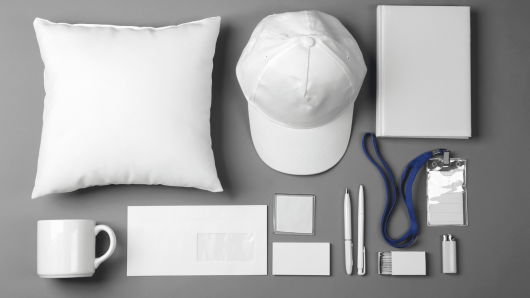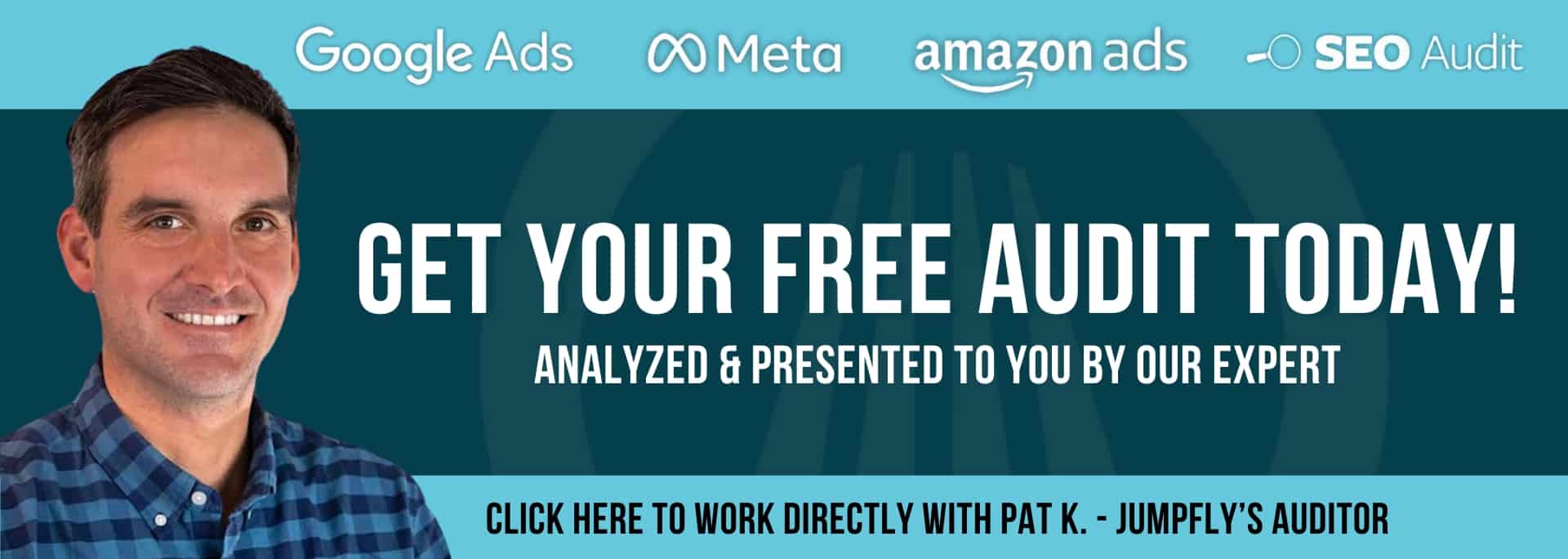How to Answer the “Man in the Chair” Today
If you’ve worked in marketing for any length of time, you’ve probably run across that skeptical man from McGraw-Hill’s iconic 1950s ad. He’s seated in a chair with his arms crossed, brow furrowed, as he brutally dismantles your pitch before you’ve even begun:
I don’t know your company.
I don’t know your product.
I don’t know what you stand for.
I don’t know your customers.
I don’t know your record.
I don’t know your reputation.
Now–what was it you wanted to sell me?”
Those same objections still kill conversions today, just faster. Think about it: people scroll past hundreds of ads a day, attention spans have shortened, and expectations have risen. You’re expected to make a connection, spark interest, and establish trust all in a few seconds.
So, how can you use your paid Search ads to respond to the “Man in the Chair” today?
1. “I don’t know who you are.”
Brand awareness isn’t optional; it’s foundational. You can’t convert someone who doesn’t know your brand exists, and in paid search, you don’t get any warm-up time. You get one impression, maybe two, and each one has to count.
Strategy: Get visible, early.
Run top-of-funnel campaigns focused on discovery, not sales. Demand Gen campaigns are ideal for this: they let you combine image, video, and product feeds across YouTube Shorts, Discover, and Gmail to stay in front of users before they even start researching. Just don’t expect a high ROAS. Your return on ad spend may be reflected in a Search campaign or organically later in the conversion funnel.
Launch a New Customer Acquisition (NCA) Performance Max campaign to get in front of entirely new users. Go easy on the offers for this type of campaign. Instead, lead with your mission, your origin story, or a personal note from the founder throughout your assets. The goal here is to be remembered later, when that user has a need for something you provide.
Don’t overthink production value when it comes to videos for these campaigns. Grab your phone, and shoot short videos of employees (with permission), founders, or even a “what we do and why” message. People want to see real faces and hear real voices, so avoid using too much stock footage or AI-generated silliness.
2. “I don’t know your company.”
Think of every ad as a first impression. If that first impression feels impersonal or overly sales-driven, you can lose the chance to build a relationship with your audience. The brands that win aren’t just talking about what they’re selling; they’re introducing themselves intentionally.
Strategy: Build brand equity with every touchpoint.
Use Performance Max, YouTube, and Demand Gen to deliver brand-first narratives. Test a few variations of “Meet the Team,” “Why We Started,” or “Behind the Scenes” content to build familiarity.
Weave your values into your ad copy: “Family-Owned Since 1988,” “We Offer Military Discounts,” “Carbon-Neutral Shipping.” Align these values with your landing page content.
Use ad extensions like callouts to highlight what sets you apart: “Free Lifetime Warranty,” “Plastic-Free Packaging,” “Locally Made.” Remember, these aren’t product features; they’re credibility and trust factors.
3. “I don’t know your product.”
Your product or service should be crystal clear: what it is, who it’s for, and why it matters. Otherwise, no one’s clicking, and no one’s buying. Think of ambiguity as the enemy of conversions.
Strategy: Clarity over cleverness.
Lead with product explainers, video demos, and benefit-driven headlines. Visually demonstrate how your product solves a problem.
In your Search campaigns, use lifestyle images and videos that reflect real-world usage, because people love human-centered content right now. Introduce pain points right away, and then highlight your customers’ excellent results with “before/after” visuals or testimonials.
Now, this one is really important: tighten up your product feed. Treat it like your storefront. Don’t stick your SKUs in your product titles; instead, clearly name the product, and include important details, like features, color, and size: “Men’s Waterproof Hiking Jacket – Blue, Large.” Clearly describe what people are actually getting to increase their confidence when buying from you.
4. “I don’t know what your company stands for.”
Today’s buyers don’t just want features. In fact, they’re gravitating toward brands that stand for something they respect.
Strategy: Make your purpose visible.
Highlight your mission with impactful messaging in YouTube videos and Shorts. Start with your logo and URL, hook viewers in the first five seconds with the problem, and then explain your mission-driven solution.
Echo that messaging by dropping purpose-driven taglines into headlines: “Ethical Jewelry | Handcrafted with Intention,” “Zero-Waste Skincare | Powerful & Planet-Friendly.”
When people align with your mission, they become more than customers. They become brand advocates. But you have to show them what you believe in, and fast.
5. “I don’t know your customers.”
Social proof not only reassures, it converts. In a digital environment full of dubious promises, buyers are looking for evidence that someone like them has already taken the risk and been rewarded.
Strategy: Turn customer voices into ad assets.
Feature Google reviews, Trustpilot scores, or short testimonials in headlines and descriptions. Run video ads that showcase real customers using your product, whether they’re unboxing, reviewing, or using it to solve problems.
Use review extensions in your Microsoft Ads to share positive reviews from a third-party source. These appear under your text ads, and when users click the review extension, they’ll go directly to the review source. Let your customers vouch for you, directly in your ads!
Post video testimonials on your YouTube channel and website, and repurpose them in your campaigns. A quick selfie video from a satisfied customer can outperform polished videos in today’s trust-starved environment.
6. “I don’t know your record.”
When in doubt, buyers will go with the safer bet, so if you’ve delivered results, broadcast them clearly and confidently.
Strategy: Make your track record visible.
Use sitelinks to highlight case studies and success stories. Don’t keep them buried in your footer. They’re your accomplishments, so highlight them in your ads.
Incorporate your achievements into headlines like: “Award-Winning Customer Support,” “Trusted by 20K+ Businesses,” “Voted Best of [City/State/Industry].”
Run Microsoft Audience Ads that target job titles and industries, showcasing your success metrics, industry-specific case studies, and B2B client testimonials. Quantify what you’ve done and make it impossible to miss.
7. “I don’t know your reputation.”
Your reputation isn’t what you say, it’s what other people say about you.
Strategy: Showcase your credibility.
Mention partnerships, awards, and social impact directly in your ad copy. Examples include: “Official Partner of [Recognizable Org],” “600K+ Meals Donated Since 2003,” “As Seen in [Reputable Publication].”
Opt in to Google Customer Reviews in Google Merchant Center to display your seller rating with your ads. That “★★★★★ Rating for [your business]: 4.8 – 1,240 reviews” under your ad copy is not fluff; it’s credibility provided by your customers.
Behind-the-scenes videos and images also build a reputation. Show your team in action, your factory floor, your packing process, and your work in the community. People want to know who they’re buying from and what they’re all about. Assets like these are great in Demand Gen, Performance Max, YouTube ads, and even as image extensions for brand-focused Search campaigns (just remember to leave off any overlay).
8. “Now—what was it you wanted to sell me?”
Branding opens the door. Performance walks through it. The trick is to align them.
Strategy: Take a brand-led approach.
Connect your Demand Gen, YouTube, and Display campaigns (top-of-funnel) to your Performance Max, Shopping, and Search campaigns (mid- and bottom-of-funnel) with unified messaging and creative assets. The transitions should feel seamless with familiar assets, repeated visuals, and a consistent tone.
Use Customer Match in both Google and Microsoft Ads to re-engage past buyers and warm leads. Push offers to known audiences. Use high-value customer lists to find lookalikes in your High Value Customer Acquisition Performance Max campaigns. And remember: the best-performing ad is not always the loudest. It’s the one that feels familiar because the user already knows you.
Final Thought: Branding is Your Performance Foundation
In a world of short-term performance goals and instant data, it’s easy to treat branding as “nice to have.” But branding is not the garnish, it’s the groundwork. It’s what lets every other marketing dollar stretch further. It’s what makes your ads believable. And it’s what turns cold leads into warm conversations. The brands that win aren’t just optimizing campaigns. They’re answering every one of the “Man in the Chair’s” objections before he even begins.








